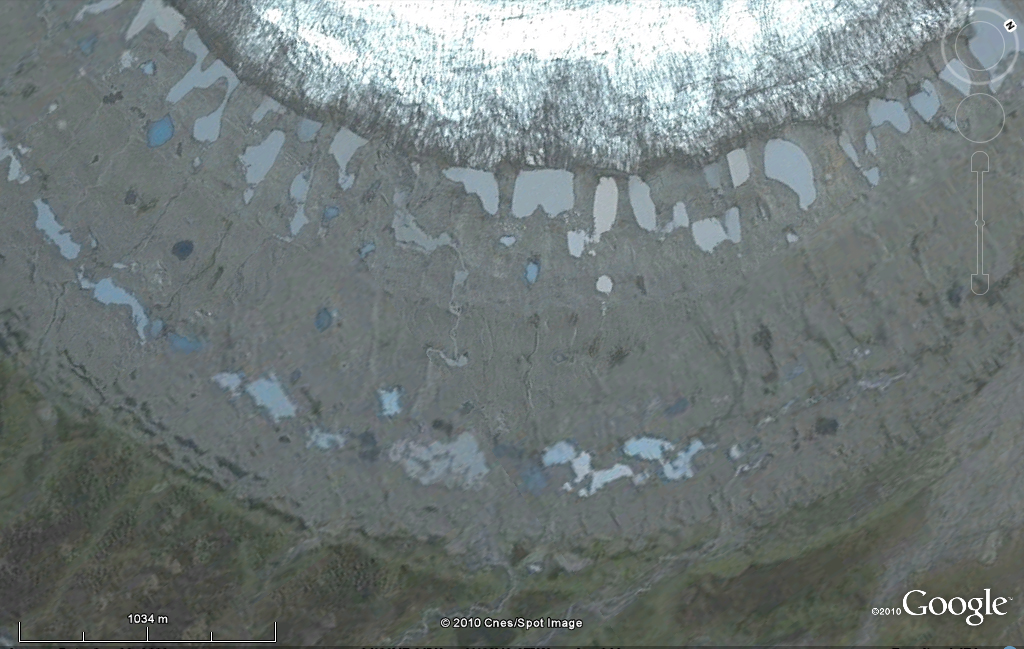With a helpful Twitter hint from Ron Schott, I won my second “Where on (Google) Earth?” challenge, the 214th edition of this popular geoblogospheric competition. As a result, I get to host the next one, Where on Google Earth? #215.
The aim of the game is to figure out where on Earth this satellite imagery comes from, and then post the coordinates (lat/long, UTM, whatever) and give a brief explanation of the geologic significance of the region. (I’ve got a full post ready to go that goes into more detail on the region; so you need only sketch out the flimsiest of details.)
Post your answer in the comments section once you’ve figured it out. The winner earns the right to host Where on Google Earth #216. If you don’t have a blog of your own, then I’ll be happy to host it here on your behalf. I invoke the Schott Rule, which says that you have to wait one hour for each past Wo(G)E that you’ve won before answering. Posting time is 9:00am on Saturday, October 16.
Here it is:
Please note that north is off to the upper right. You can enlarge the screenshot to full-size by clicking through twice. Good luck!


That’s a piedmont glacier from the Hofsjokull glacier in Iceland (64N, 18W). That grey area is the till that was left behind by the receding glacier with the maximum expansion clearly delineated by the end moraine. Within the area of till one can see all the meltwater lakes that feed the local streams and rivers. It looks like some eskers and drumlins are visible also.
Bingo. Nice work!
glacialtill is right. Basically we have terminated ice (glacier) and lakes containing meltwater . So with the help of chance, i scanned iceland first. 64.6N 18.7W
http://www.panoramio.com/photo/3040442
Follow-up discussion here.
New Where on Google Earth #216